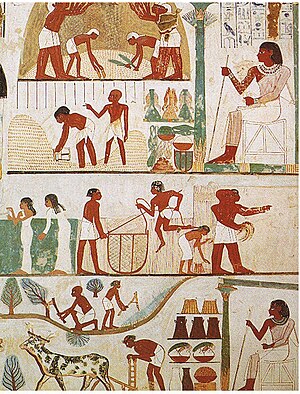Write answers in your notebook and draw a map on a blank paper.
1. What is the purpose and use of this map? What does the map show?
2. Look at the KEY. What information does it give you about Egyptian Trade Routes?
3. What is the purple area on the map? What routes travel over land? What routes travel over water?
4. Look at the compass rose (the symbol telling North, South, East and West). What is the general direction of the trade routes?
5. Why did the trade routes run through the purple area? Why is there no road connecting Thebes and Giza? 6. Work with a partner. Draw a simple map showing the route from your homes to school. Add a scale (the line telling how far between the places) and a compass rose. Mark the location of your homes and the school with symbols. Identify the symbols with a map key. Estimate the distance between your home and that of your classmate, and write this on the side of your map.
 Image by Getty Images via @daylife
Image by Getty Images via @daylife
 Image via Wikipedia Ancient Egypt
Image via Wikipedia Ancient Egypt Image via Wikipedia
Image via Wikipedia